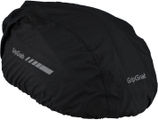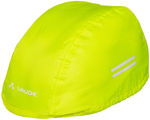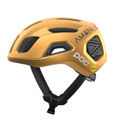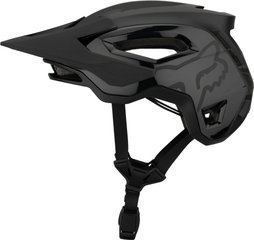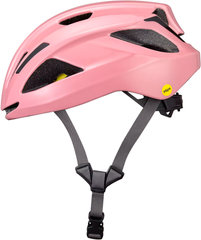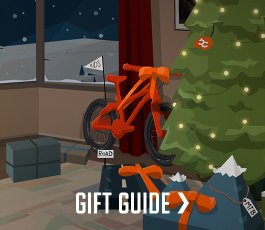Helmets
OUR Helmets RECOMMANDATIONS
Our Suggestions
Not quite sure which helmet you need or how to fit one to give you the best protection? Then check out our guide on bike helmet basics. We'll show you how to find the right size and what adjustments you can make to get your helmet to fit you perfectly. View Helmet Guide.
1. Figure out what you want to use your helmet for
First, you should determine the main reason you’re looking for a new bicycle helmet. Mountain bike helmets differ significantly in construction and shape from road helmets or urban helmets. You can find detailed information on the differences between these helmets on their respective pages. Once you’ve figured out what you want to use your helmet for, you can move on to the next step:
2. Finding the right helmet size
Bicycle helmets are usually offered in at least two sizes, and usually even more. To order the right size, you need to find out your head circumference. All you need is measuring tape: place it about two finger widths above the eyebrows and run it around the head once at this height. If your head circumference is exactly between two sizes, we recommend opting for the larger size. This lets you easily wear a cap underneath your helmet in winter.
3. Choosing the right model
The be-all and end-all of a bicycle helmet is the right fit. Surely everyone has had this experience at some point. Some helmets just don't fit your head shape, while others fit like a glove. The reason: similar to a cobbler's lasts, helmet manufacturers use their own sample head shapes in production. This means some models are a little rounder, others a little more oval. If you have already had positive experiences with a helmet from one manufacturer, the likelihood is quite high that other helmets from this manufacturer will also fit you well. Note: If you wear glasses, it can happen that a different size or fit can suddenly cause pressure points to develop.
4. Decide on details
Most of the time, it's the little things that make a big difference. A cut-out for plaits or ponytails, space for sunglasses or an integrated rear light for more visibility, good ventilation or a magnetic closure instead of the classic buckle: make clear which details your new helmet should feature so that you’ll be satisfied in the long run. A tip for mountain bikers: mounting a helmet lamp is possible with most models without any issues.
5. When the postman rings...
Once you've made your choice, we won't keep you waiting long. Thanks to our signature speedy shipping, you will receive in-stock helmets within a few days’ time. That’s when the fun really starts:
6. Trying on a helmet
After un-boxing comes the try-on test: the helmet fits optimally when the front edge hits just above the eyebrows and the helmet sits straight on the head. If you look straight ahead to the horizon, the visor (if there is one) should neither point to the sky nor to the ground. It's best to check in the mirror or have someone else help you. Also make sure that the helmet fits snugly against your head. Individual pressure points should be avoided, and ideally, only the padding should touch your head.
7. Adjusting the bicycle helmet correctly
The next step is to get the helmet to fit properly on your head. You will find a head ring inside almost every half-shell helmet and also in many full-face helmets, which you can adjust in size to the millimetre by means of a turn dial. The helmet should fit snug enough so as not to slip when you shake your head, but not so tight that it pinches. It’s best to test your adjustment settings with the chinstrap left open. If the helmet remains in position when shaken, it is well-adjusted. The head ring can often also be adjusted in height, which allows you to adjust it to fit the shape of your skull or hairstyle.
8. Adjust the straps
You should align the side straps so that the front and back straps come together in a Y-shape in front of your ear. You can adjust the length of the straps individually. The clip for adjusting the strap should be loose against the skin, and the straps should not rub against the ear.
9. Tighten the chinstrap
When finally adjusting the chin strap, make sure that there is a gap of about one to two finger widths between the chin and the strap. This way, the helmet stays in the right place in case of a fall without cutting off your ability to breathe. At the same time, the strap cannot slip over the chin. Once the chinstrap has been adjusted to the correct length, you can fix the excess length into place. Depending on the model, this can be done with a rubber ring, another loop or on the chin buckle. If the belt flutters and bothers you while riding, you can also simply snip it off. If you do cut it, make sure not to go too short, as you may have to readjust the helmet to fit a cap underneath in winter. The cut edge can be finished carefully with a cigarette lighter, so that you to don’t have to deal with annoying frays.
10. Let's go!
Does your helmet fits? Then we're good to go. But please remember: even a helmet needs occasional maintenance. From time to time, you ought to wash the padding regularly by hand or at 30 degrees in the washing machine, and rub the outer shell with a damp cloth. Sun, rain, snow or even sunscreen can take a toll on a helmet. Therefore, you should replace yours after about five years. Should small parts break beforehand, we also offer various individual spare parts.
